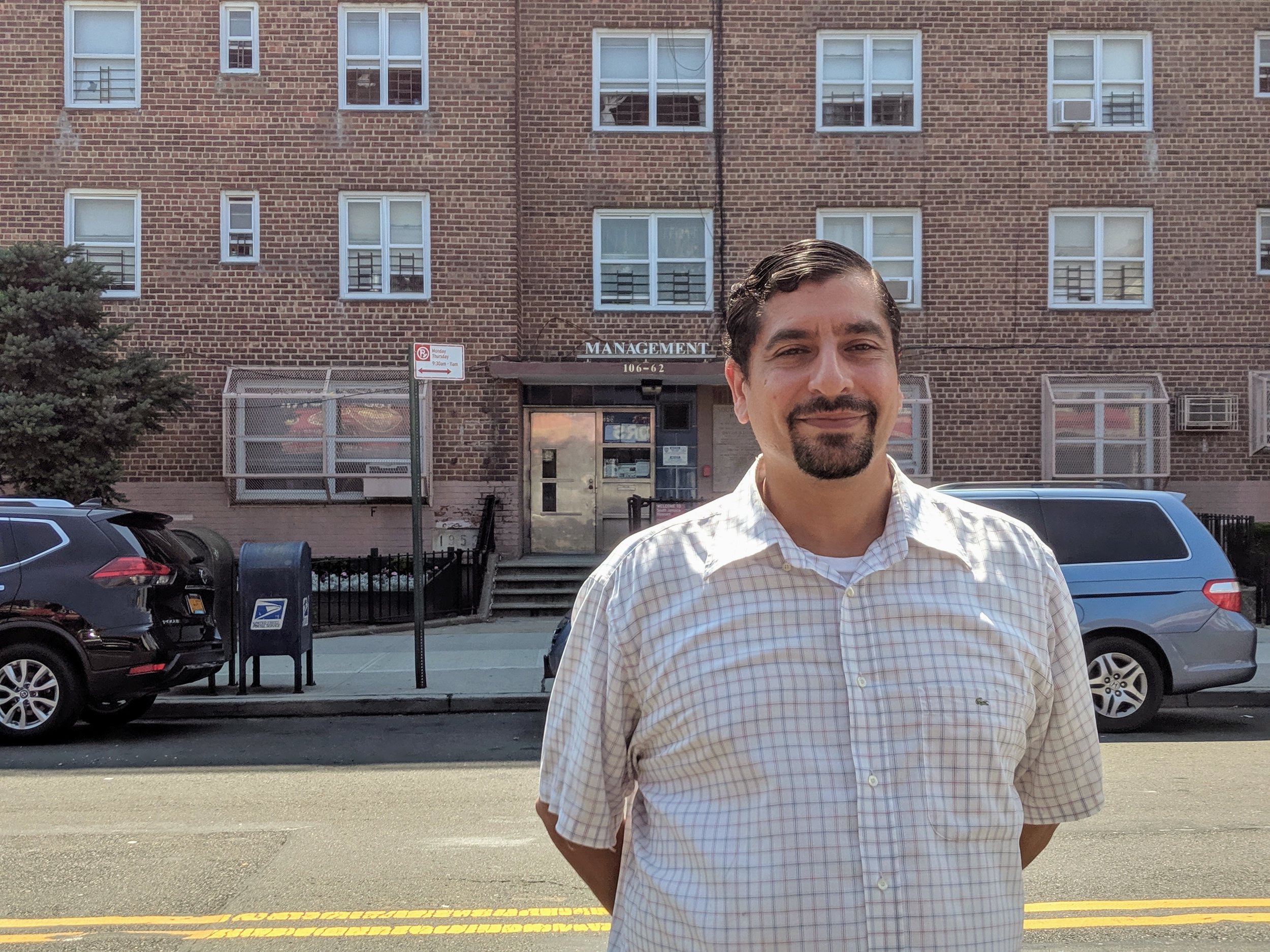Occupy NYCHA takes root in South Jamaica
/Martinez shakes hands with Tony Robinson, who owns a local liquor store. Tenant leaders used to gather for meetings at Robinson’s shop, he said. Eagle file photo by Phineas Rueckert.
By Phineas Rueckert
Manny Martinez greeted everyone he passed with a smile and a handshake. As he walked through the South Jamaica Houses — a sprawling NYCHA development that’s home to 3,000 people — he spoke candidly on a number of topics in rapidfire style: the recent Queens District Attorney race, flooding in the building that houses seniors, the history of red-lining in majority black and African American Southeast Queens.
Martinez grew up in the South Jamaica Houses and has lived there almost his whole life. Now, he said, he’s fighting for its survival in the face of encroaching privatization.
“We’re developing our strategy,” he said. “We’re gathering the troops.”
Martinez is one of the organizers of the nascent Occupy NYCHA movement — a tenant-led initiative to push back against a federal Department of Housing and Urban Development program called Rental Assistance Demonstration.
RAD shifts management and operations of public housing to private companies while public housing authorities maintain ownership of the land. Opponents say it is the first step toward privatization. The Mayor’s Office contends that it is not — and told the Eagle in June that “public housing will remain public, period.”
Mayor Bill de Blasio has said that he hopes to convert about 62,000 united — roughly one third of NYCHA’s properties — to RAD in the next decade, which he says will give 140,000 NYCHA residents access to immediate repairs without them seeing a rent increase. Under RAD, housing units are converted from Section 9 housing, which gives money to public housing agencies to make improvements, to Section 8 project-based vouchers, which can be doled out to private contractors.
As Gothamist has reported, private investment will cover more than half of the repairs proposed in de Blasio’s 10-year plan to upgrade NYCHA facilities, which is currently in need of more than $30 billion in investment.
“We have an opportunity to undo decades of neglect and mismanagement, and we have to take it,” de Blasio said in a statement in November 2018. “These partnerships are one of our best-proven tools to deliver critical repairs.”
South Jamaica Houses Resident Council President Manny Martinez stands in front of the development’s community center. Eagle file photo by Phineas Rueckert.
Housing advocates worry, though, that these repairs may not be evenly distributed by private developers.
“No sane private sector landlord is going to buy into a building that is going to be subject to lead paint litigation, that is going to be subject to mold litigation,” Fight For NYCHA organizer Louis Flores told the Eagle in June. “You can always sell the better condition buildings, and that means that the buildings in most need of repair in NYCHA are not going to get the funding they need under RAD.”
Where de Blasio saw a quick fix through RAD, Martinez and the other Occupy NYCHA activists saw a slippery slope.
“They’re not improving the management, they’re substituting the management,” Martinez said of RAD. “Their whole focus is the property, not the people.”
Occupy NYCHA, which was recently incorporated as a nonprofit, is beginning to bring tenant leaders together to fight back against the mayor’s RAD plan. The organization’s three leaders — Carmen Quiñones, Cynthia Tibbs, and Claudia Perez — are all part of their local tenant associations. Last week, they held a rally at City Hall to speak out against RAD and demand a seat at the table.
“I am against RAD: it is called ‘real advanced displacement,’” said Perez, the president of the Washington Houses in East Harlem. “We’re the ones that are in these conditions, we’re the ones that know what’s going on in our apartments.”
“We need to be at the table,” she continued. “They are switching us from one slumlord to another.”
So far, fewer than 1,400 units in New York have been converted under RAD — all of them in Far Rockaway. City leaders, including several Queens representatives, said that the restoration of the Ocean Bay Apartments, which were damaged during Hurricane Sandy, was a success. But Occupy NYCHA leaders disagree.
“If you go to any place that they have taken over, it is worse than a NYCHA development,” Perez said of Wavecrest Management, the company that managed the repairs.
Martinez echoed that assessment. Ocean Bay, he said, has already “had some issues,” such as rent calculations for tenants.
What is clear, Martinez said as he walked past the South Jamaica Houses Community Center, is that it’s time for a change. He spoke of the public housing stock as a “time capsule.” Many of the buildings had not seen repairs in decades, he said.
But that change, he added, should be carried out by the residents of public housing — not private landlords.
“We’re still expanding,” Martinez said of the Occupy NYCHA movement. “This is a revolution.”





